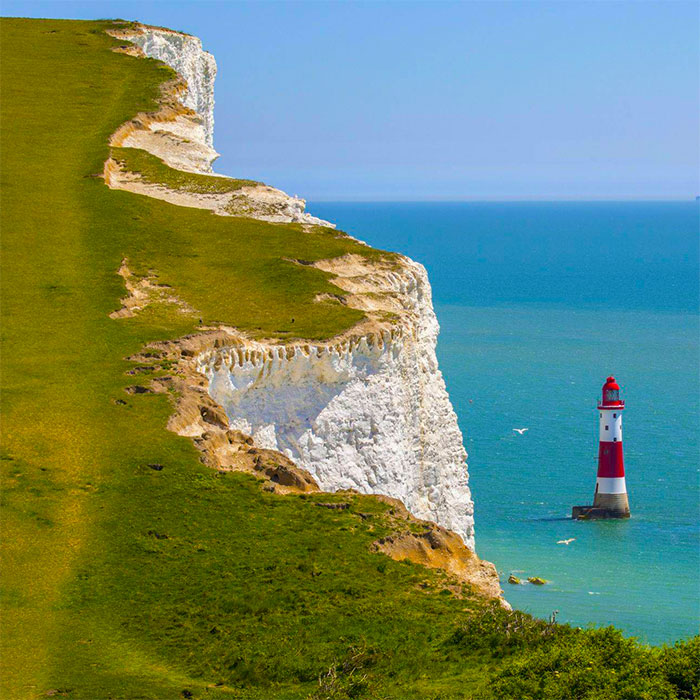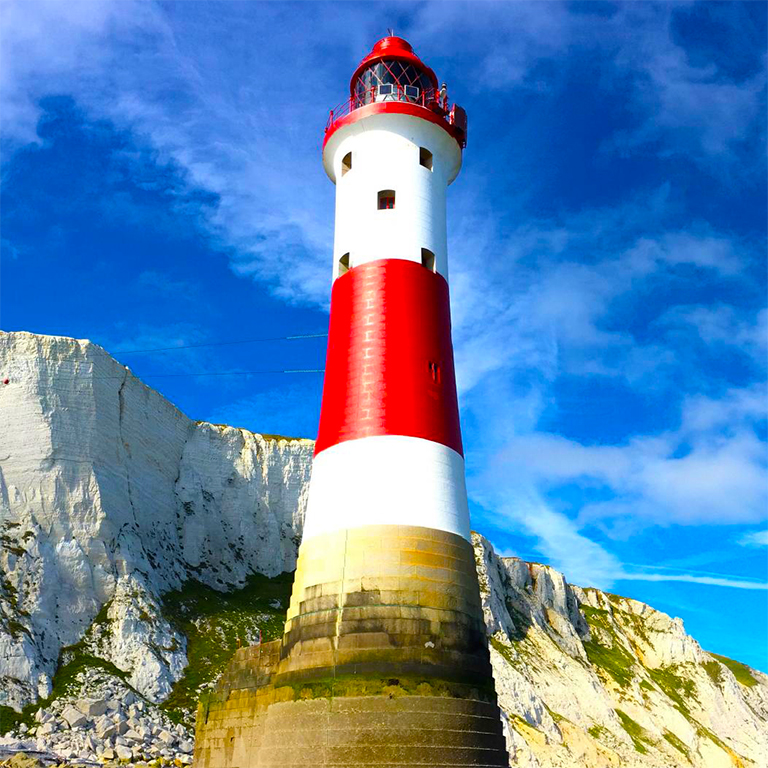Beachy Head & Beachy Head Lighthouse
Beachy Head is a chalk headland in East Sussex, England. It is situated close to Eastbourne, immediately east of the Seven Sisters.
The cliff is the highest chalk sea cliff in Britain, rising to 162 metres (531 ft) above sea level. The peak allows views of the south east coast towards Dungeness in the east, and to the Isle of Wight in the west.
West from Belle Tout, the cliffs drop down to Birling Gap, then ascend through the Seven Sisters chalk cliffs to Haven Brow, overlooking the Cuckmere valley. The area is a popular tourist attraction.
Birling Gap has a restaurant and, in the summer, multiple ice cream vans serve the area. There are many choices of walking routes.
Beachy Head is also a known spot for TV / Film Production including James Bond, Harry Potter, The Battle of Britain and Chitty Chitty Bang Bang to name a few.
All content provided by Wikipedia


Beachy Head Lighthouse is a lighthouse located in the English Channel below the cliffs of Beachy Head in East Sussex. It is 43 m (141 ft) in height and became operational in October 1902. Beachy Head Lighthouse was built to replace the Belle Tout Lighthouse on top of the cliffs of Beachy Head, which was completed in 1834. This was not as successful as had been hoped, as its light was frequently obscured by sea mists. Thus it was decided to build a replacement at the foot of the cliffs. Belle Tout lighthouse was decommissioned in 1902, and still exists as a holiday home.
In 1900 to 1902 under the direction of Sir Thomas Matthews, the Trinity House Engineer-in-Chief, Beachy Head Lighthouse was built, sited about 165 metres seawards from the base of the cliffs. For the construction, a temporary cable car from the cliff was installed for the transport of workers and stones to an iron ocean platform adjacent to the lighthouse. 3,660 tons of Cornish granite were used in the construction of the tower.
For more than 80 years, the red-and-white striped tower was staffed by three lighthouse keepers. Their primary job was to maintain the revolving light, which was then visible 26 nautical miles (48 km; 30 mi) out to sea. For most of the 20th century cooking was done on a solid-fuel range and the accommodation was lit by paraffin lamps. Electricity first reached the lighthouse in 1975, whereupon an electric lamp was installed in the optic.
All content provided by Wikipedia